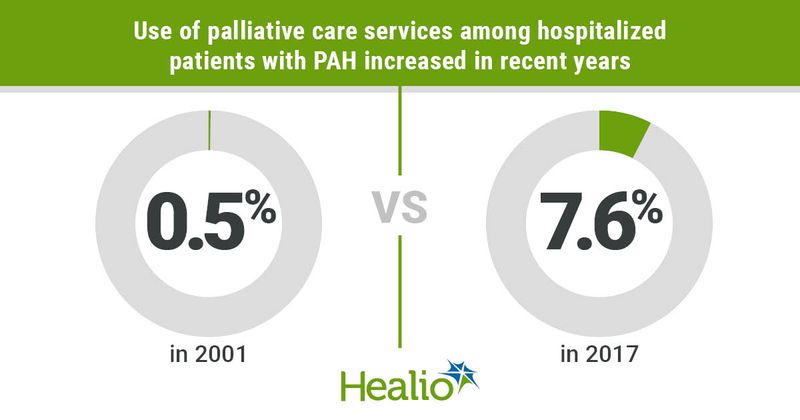Inpatient palliative care for PAH low, but use increased in recent years
Use of palliative care services among inpatients with pulmonary arterial hypertension in the United States increased from 2001 to 2017, with a significant rise in the past decade, researchers reported in Chest.
“Experts recommend incorporation of palliative care services into disease management, but there is little data regarding the utilization of palliative care services among patients with PAH,” Hilary M. DuBrock, MD, from the division of pulmonary and critical care medicine at the Mayo Clinic in Rochester, Minnesota, told Healio. “Our study is important as it provides insight into the current state of palliative care utilization in patients with PAH and also highlights specific disparities that exist regarding use of palliative care services across the country.”

Researchers assessed 30,495 patient admissions with a primary diagnosis of PAH from 2001 to 2017 using the National Inpatient Sample. The researchers then evaluated use of palliative care services among those identified.
Use of inpatient palliative care services was low overall in 2.2% of hospital admissions. Among those who used palliative care services, the mean age was 62.2 years and 77.1% were women. Use of inpatient palliative care services steadily increased over time, from 0.5% in 2001 to 7.6% in 2017.

The researchers identified several independent predictors of increased use of palliative care services, including white race, private insurance, higher socioeconomic status, hospital-specific factors, higher comorbidity burden, cardiac and noncardiac organ failure, and use of extracorporeal membrane oxygenation and noninvasive mechanical ventilation.
In addition, the researchers observed that use of palliative care services was associated with a higher prevalence of do-not-resuscitate status, longer lengths of stay, higher hospitalization costs and increased in-hospital mortality with less frequent discharge to home.
“Moving forward, we need further research to guide patient selection and appropriate timing of palliative care consultations in PAH and also to address disparities in utilization of palliative care services,” DuBrock told Healio. “Additionally, further education is needed for both patients and providers regarding the role of palliative care in the comprehensive management of PAH.”
For more information:
Hilary DuBrock, MD, can be reached at dubrock.hilary@mayo.edu.
